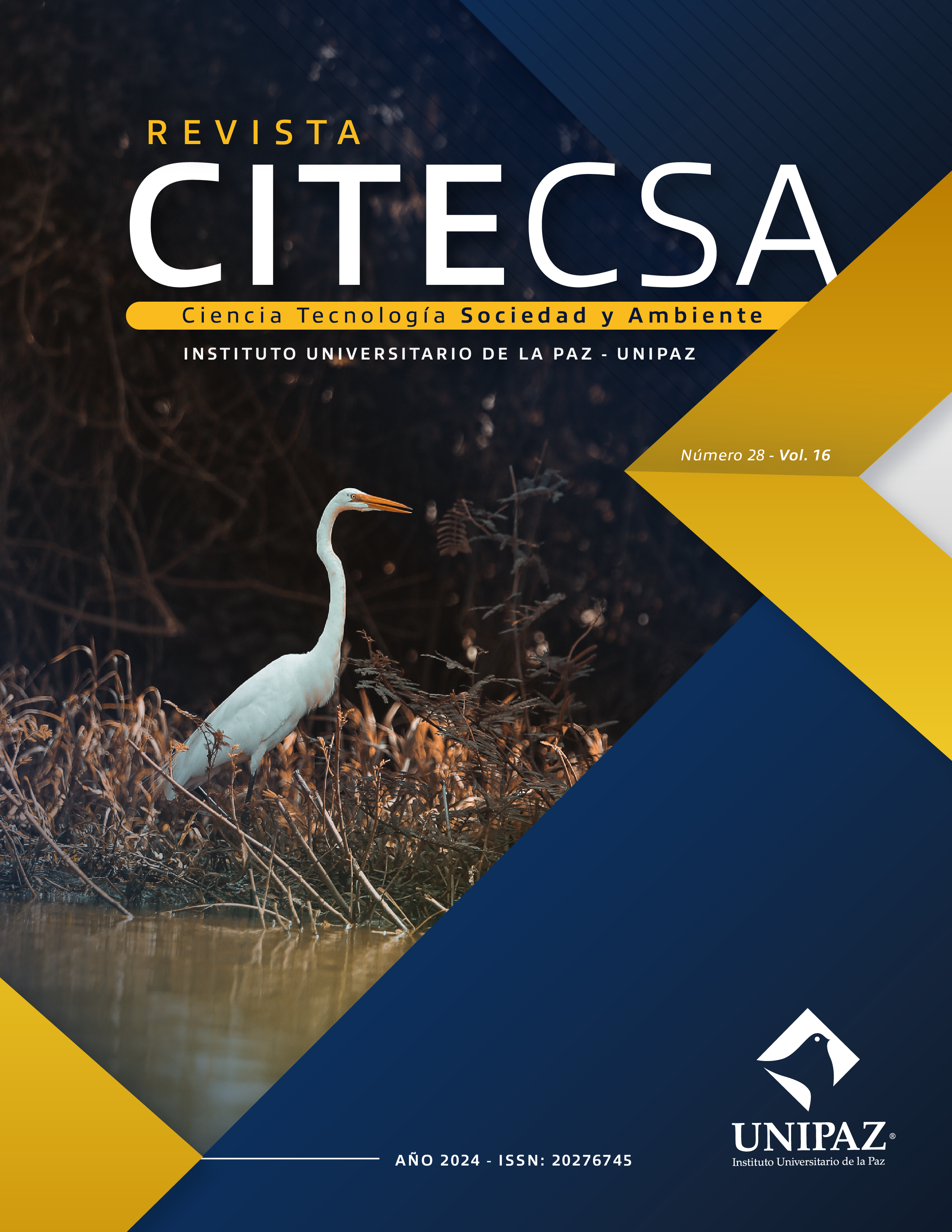Dynamics of maturation of rubber cups exposed to real environmental conditions
Keywords:
drying rate, logistic function, dry rubber content drc, hevea brasiliensis.Abstract
Rubber is obtained from Hevea Brasiliensis and its commercial value depends on its dry matter content. During maturation, rubber loses water and reactions occur that improve its quality. However, the study of maturation has been carried out under controlled laboratory conditions, so there is no clarity on the dynamics of drying of clots exposed to real environmental conditions. This research evaluates the dynamics of drying through the behavior of solids and water concentration as a function of maturation time under real environmental conditions. For this, samples were taken from a rubber crop, clone FX3864, located at the La Paz University Institute. Dry matter and water content were determined by thermogravimetry. Samples were analyzed with maturation times of 0, 10, 15, 20 and 30 days. The water content expressed a logistic type behavior with R^2=0.98. It was shown that times longer than 20 days favor DRCs higher than 75%. Clots with a mean radius of 15 ± 5 cm and a dry mass of 0.5 ± 0.1 kg were recorded. The maximum water transfer rate occurred at 12 days of maturation with a flux of 0.133 kg water/m2d. There is a water remainder of close to 20% for indoor drying. From this it can be inferred that the sale of clots with maturation times of less than 13 days affects the producer's return on investment, since they would contain a large amount of water, which has no commercial value. Likewise, maturation times of more than 20 days do not affect the dry rubber content, since the drying speed decreases considerably.
References
American Society for Testing and Materials. (2020). ASTM D1076, Standard specification for rubber concentrate, ammonia preserved, creamed and centrifuged Natural Latex. Philadelphia, United States of America.
Cáceres-Sandoval, A. P., & Gauthier-Maradei, P. (2013). Análisis termogravimétrico como un nuevo método para la determinación de contenido de sólidos totales (CST) y caucho seco (CCS) del látex natural. Revista ION, 25(2). Recuperado de: https://revistas.uis.edu.co/index.php/revistaion/article/view/3040
Cruz-Tang, N., Suárez, G., Rico, F., Palencia-Blanco, C., & Paz, H. (2023). Modelo productivo del cultivo de caucho natural Hevea Brasiliensis (Willd. Ex A. Juss.) Müll. Arg, para el fortalecimiento del sector cauchero en el Magdalena medio. Poster. XVII Encuentro Nacional y X Encuentro Internacional de Investigadores de las Ciencias Pecuarias. Evento llevado a cabo por la Universidad de Antioquia en Medellín, Colombia.
Hosler, D., Burkett, S. L., & Tarkanian, M. J. (1999). Prehistoric polymers: rubber processing in ancient mesoamerica. Science, 284(5422), 1988-1991. DOI: 10.1126/science.284.5422.1988
Lieberei, R. (2007). South American leaf blight of the rubber tree (Hevea spp.): new steps in plant domestication using physiological features and molecular markers. Annals of botany, 100(6), 1125-1142. https://doi.org/10.1093/AOB/MCM133
Ministerio de Agricultura de Colombia. (2018). CADENA DE CAUCHO NATURAL, Indicadores e Instrumentos. Recuperado de: https://sioc.minagricultura.gov.co/Caucho/Documentos/
Noinart, J., Bonfils, F., Musigamart, N., Sainte-Beuve, J., Flori, A., Liengprayoon, S., Rattanaporn, K., Granet, F. & Vaysse, L. (2022). Post-harvest maturation of Hevea brasiliensis latex coagula: Ranking of the key drivers of the mesostructure and physical properties of natural rubber. Journal of Rubber Research, 25(1), 5-18. https://doi.org/10.1007/s42464-022-00146-7
Ossa Maya, N. (2018). Informe de mercado mundial de caucho y cacao. Fiduciaria central. Bogotá, Colombia. Recuperado de: https://www.fiducentral.com/images/files/informeseconomicos/
Rempel, G. L., & Wang, H. (2017). Nitrile Rubber Latex Blends: Preparation, Characterization and Applications. In: Markovic, G., P. M., V. (eds) Rubber Nano Blends. Springer Series on Polymer and Composite Materials. Springer, Cham. https://doi.org/10.1007/978-3-319-48720-5_3
Seng-Neon, G. (1996). Storage Hardening of Natural Rubber, Journal of Macromolecular Science, Part A: Pure and Applied Chemistry, 33:12, 1939-1948, DOI: 10.1080/10601329608011018
Stokstad, E. (1999). How Aztecs Played Their Rubber Matches. Science, 284, 1898 - 1899. https://doi.org/10.1126/SCIENCE.284.5422.1898B
Treybal, R. (1997). Transferencia de masa (2da ed.). Universidad de Rhode Island. Editorial Mc-Graw Hill. New York.
Vaysse, L., Bonfils, F., Sainte-Beuve, J., & Cartault, M. (2012). Natural Rubber. Polymer Science: A Comprehensive Reference, 281–293. doi:10.1016/b978-0-444-53349-4.00267-3
Downloads
Published
How to Cite
Issue
Section
License
Copyright (c) 2024 CITECSA

This work is licensed under a Creative Commons Attribution-NonCommercial-ShareAlike 3.0 Unported License.

Este obra está bajo una licencia de Creative Commons Reconocimiento-NoComercial-CompartirIgual 3.0 Unported.

